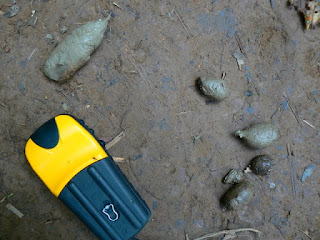Tiger Tracking on the Nam Pha from Frank Wolf on Vimeo.
This video is of a white water rafting trip down the Nam Fa in the late nineties or the early part of the last decade.
It looks like the video was made by someone who makes adventure videos with no connection to the actual trip. The trip was organised by Wildside adventures run by Michael O'Shea also known as the guy that kayaked the entire length of the Mekong with lots of good stories from half drowning in Tibet of Yunnan province, I read his account of the trip online a long time ago.
This is kind of a run on post, I'm hoping that someone who was in the area at the time will post a long and if they want anonymous or not comment about the whole thing and I'll erase this half conjecture collection of run on sentences with some factual information. Hint hint you know who you are.
Looks like most of the time was spent above the junction of the Nam Hee where the river is most turbulent and it probably took them the most time to get down. Assuming the Kahmu village was up close to Vieng Phuka somewhere. Don't know about the Akha village, a just moved Jakune Mai? The camera traps that used film were a give away. Don't know when digital came out but it's an indicator.












































